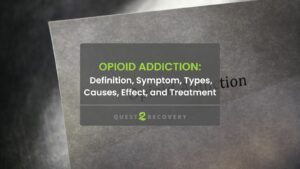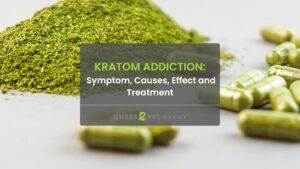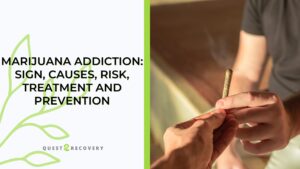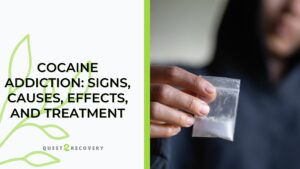Roxicodone and Percocet are narcotic, pain-relieving drugs. Also known as “blues” because they are usually manufactured in small blue pills, these powerful opioid drugs are very addictive and have a high potential for abuse. They are also referred to as blues because people tend to experience severe depression during the withdrawal process.
Prescription opioid drugs like Roxicodone and Percocet play a significant role in the opioid crisis today. According to the National Survey on Drug Use and Health, 10.1 million Americans misused prescription opioid medication in 2019 alone.
Prescription Opioids
Also known as “Roxy,” Roxicodone is a brand name for oxycodone, a synthetic opioid, and is often used to treat severe pain before and after surgery. Percocet, on the other hand, is a combination painkiller made from oxycodone and acetaminophen and is used to treat moderate pain.
Although some people think that prescription opioids are safer than street opioids like heroin, they are just as dangerous. The only difference is that opioid pain medications are legal and heroin is not. Street opioids like heroin are also less expensive than prescription opioids, which is why some people develop an addiction to heroin when they can no longer afford to buy pills or don’t have access to prescription medication.
Blues Addiction Process
Opioid drugs attach to opioid receptors in the brain and affect neural pathways that are responsible for regulating pain. This results in feelings of relaxation and euphoria in addition to pain relief, often leading people to continue taking the opioid medication even when not medically indicated or prescribed.
Opioid painkillers may be particularly attractive to people who suffer from anxiety, stress, and PTSD, or to people who simply want an escape. Because opioids are so addictive, any form of misuse or experimentation can lead to physical dependency and addiction.
Effects Of Taking Blues
Aside from their pain-relieving and high-inducing effects, opioid drugs can have unpleasant side effects even when taken as prescribed. Roxicodone has many dangerous side effects including low blood pressure, weakness, fever, and abdominal pain.
Side effects of taking Percocet include nausea, vomiting, dizziness, chest pain, and difficulty breathing. Long-term side effects of taking opioid drugs include kidney damage, liver damage, heart problems, and chronic pain.
Misusing either one of these drugs can lead to an accidental drug overdose, which is potentially fatal. Signs of an opioid overdose include shallow or labored breathing, extreme sleepiness, blue-tinged skin, and dark-colored lips. If you or someone you love are experiencing adverse side effects from taking Roxicodone or Percocet, call 911 immediately.
Roxicodone and Percocet Withdrawal
Detoxing from any opiate is an uncomfortable and potentially life-threatening process. Some Roxicodone and Percocet withdrawal symptoms include drug cravings, tremors, feeling physically cold, fever, seizures, and cardiac arrest.
A professional medically supervised detox is the best choice to help you get through the opioid withdrawal process as safely and comfortably as possible.
Many rehab centers also offer medication-assisted treatment to help people taper off opioids instead of quitting cold turkey, which can be dangerous and is not recommended.
FAQs
Is Percocet safer than Roxicodone?
No. Even though Percocet is a combination drug, it is still possible to overdose on acetaminophen, which can cause liver damage, in addition to overdosing on the opioid part of the drug.
What is the difference between Roxicodone and Oxycodone?
Roxicodone is a brand name for the synthetic opioid Oxycodone. The main difference between them is that Oxycodone is a slow-release tablet, whereas Roxicodone has an immediate effect.
What are some signs of prescription opiate addiction?
People misusing prescription opioids may have slower reflexes, slur their speech, nod off, and mumble. They may also have significant mood swings, be experiencing unusual financial hardship, and have difficulty managing their personal and professional responsibilities.
Sources:









